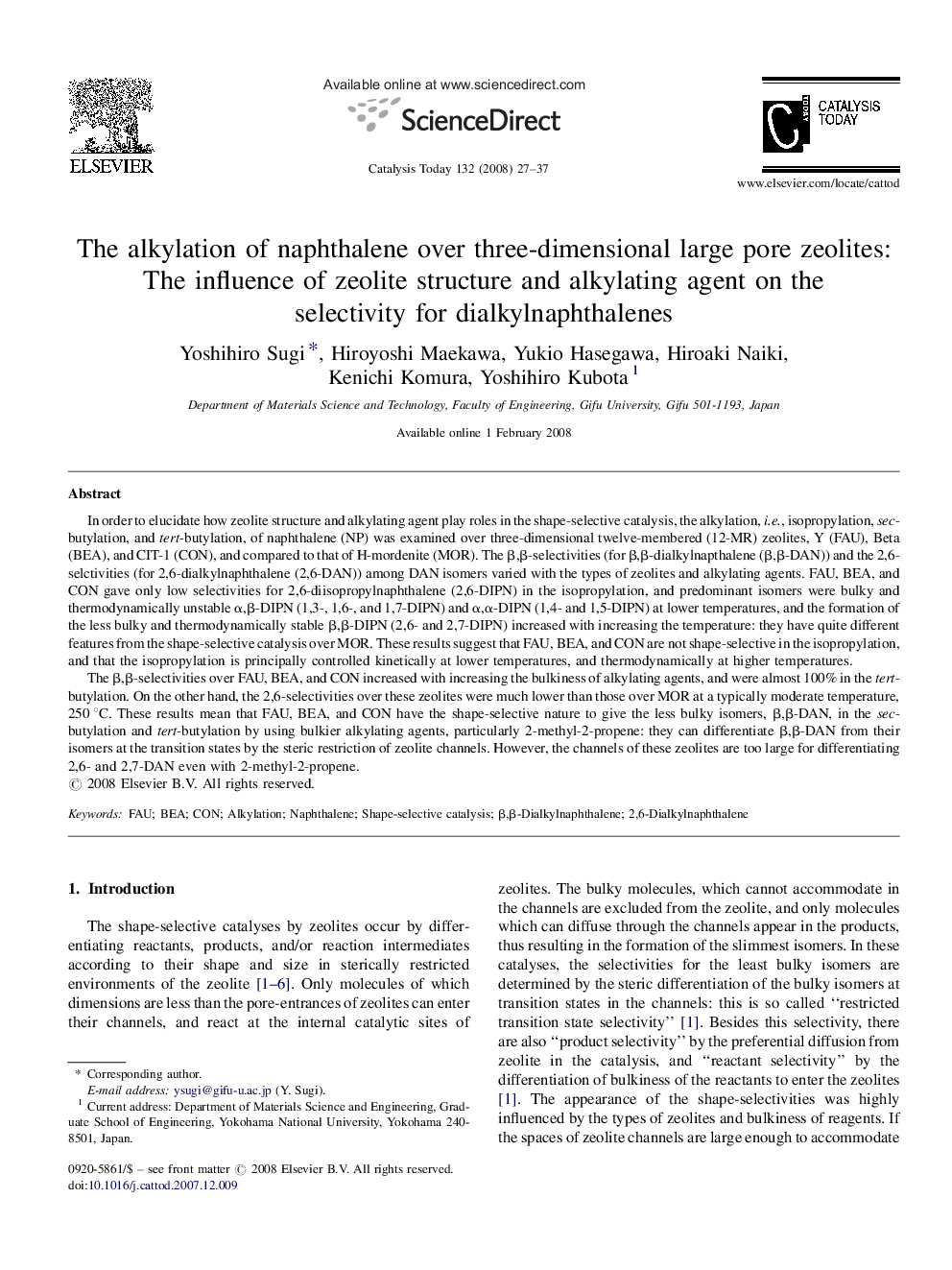| Article ID | Journal | Published Year | Pages | File Type |
|---|---|---|---|---|
| 57171 | Catalysis Today | 2008 | 11 Pages |
Abstract
The β,β-selectivities over FAU, BEA, and CON increased with increasing the bulkiness of alkylating agents, and were almost 100% in the tert-butylation. On the other hand, the 2,6-selectivities over these zeolites were much lower than those over MOR at a typically moderate temperature, 250 °C. These results mean that FAU, BEA, and CON have the shape-selective nature to give the less bulky isomers, β,β-DAN, in the sec-butylation and tert-butylation by using bulkier alkylating agents, particularly 2-methyl-2-propene: they can differentiate β,β-DAN from their isomers at the transition states by the steric restriction of zeolite channels. However, the channels of these zeolites are too large for differentiating 2,6- and 2,7-DAN even with 2-methyl-2-propene.
Related Topics
Physical Sciences and Engineering
Chemical Engineering
Catalysis
Authors
Yoshihiro Sugi, Hiroyoshi Maekawa, Yukio Hasegawa, Hiroaki Naiki, Kenichi Komura, Yoshihiro Kubota,
